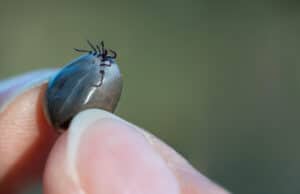There are at least eight species of ticks in New Mexico. Some come out in the spring and summer, while others come out in the cold winter months. Most live outdoors, one even lives only in the higher elevations of New Mexico, while another tick spends most of its life indoors.
Here, we’ll learn about all of the kinds of ticks in New Mexico, including what they look like, where they’re found, and what diseases they carry. Then, we’ll learn more about when ticks come out in New Mexico, and how to avoid them.
Rabbit Tick
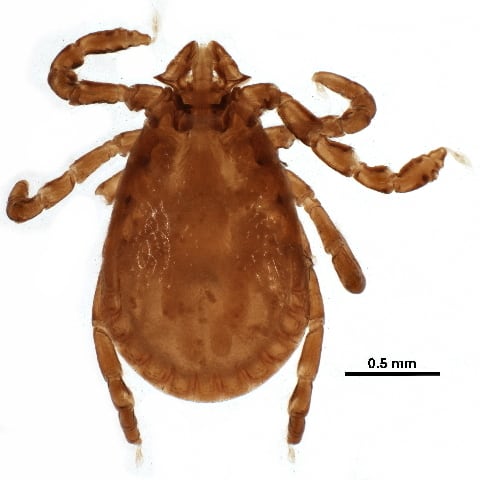
The rabbit tick rarely bites humans.
©CBG Photography Group, Centre for Biodiversity Genomics / Creative Commons – License
Rabbit ticks in New Mexico are light red-brown, with no mottling or discernable scutum. Their mouthparts are short, and their bodies are pear-shaped. They’re also known as grouse ticks; their preferred hosts include grouse and rabbits. In New Mexico, they’re usually seen in the spring and summer embedded in the ears of rabbits. These ticks rarely bite humans.
American Dog Tick
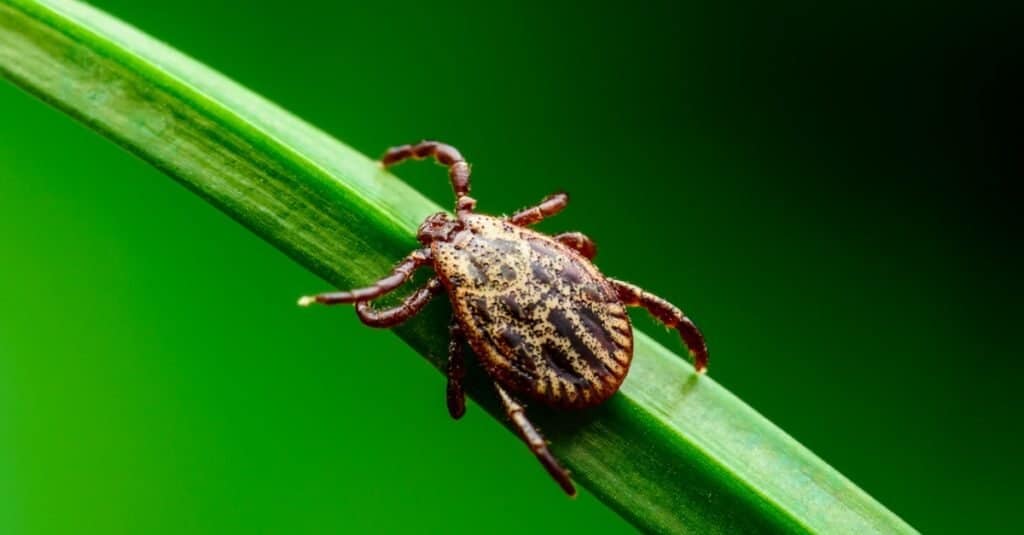
, The American dog tick lives in parts of southern Canada and northern Mexico.
©iStock.com/nechaev-kon
American dog ticks in New Mexico have ovoid, red-brown bodies with red-brown legs. Mouthparts in both males and females are small. Females have red-brown bodies with mottled tan scuta. Males have tan and red-brown mottling. While these ticks prefer forested or grassy areas, they’re also common in urban or even suburban settings. They frequently feed on dogs and humans, to whom they can transmit Rocky Mountain spotted fever.
Winter Tick
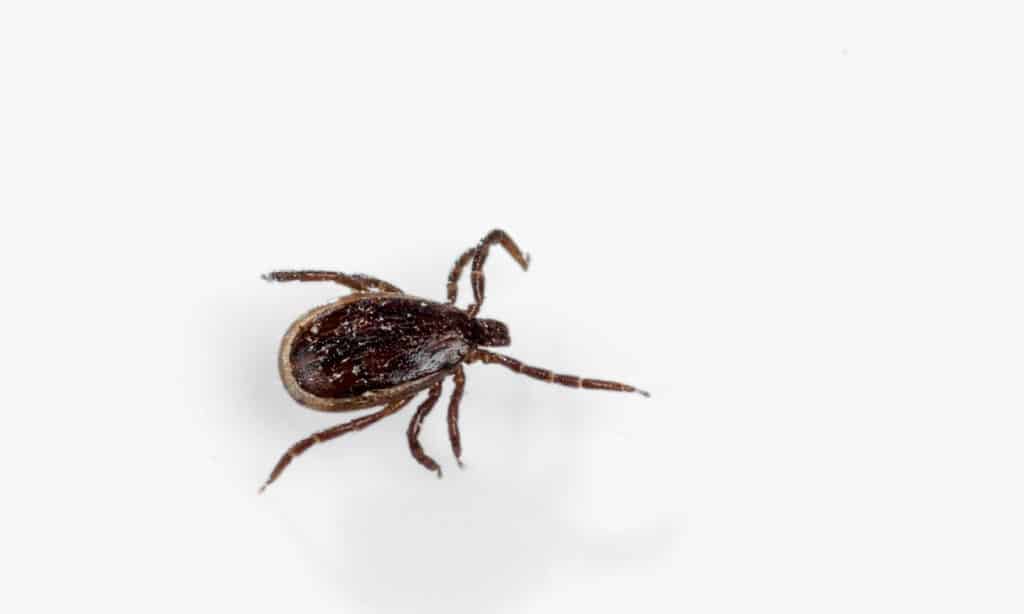
, The winter tick lives throughout the United States and Canada.
©iStock.com/VladK213
Male and female winter ticks have very different appearances. Females have red-brown legs with red-brown and white mottled bodies. Males have light brown legs and uniformly light brown bodies. These ticks rarely bite humans, but can so heavily infest large mammals, that they actually kill the host. Some of their favorite hosts in New Mexico include dogs, coyotes, black bears, and beavers.
Cayenne Tick
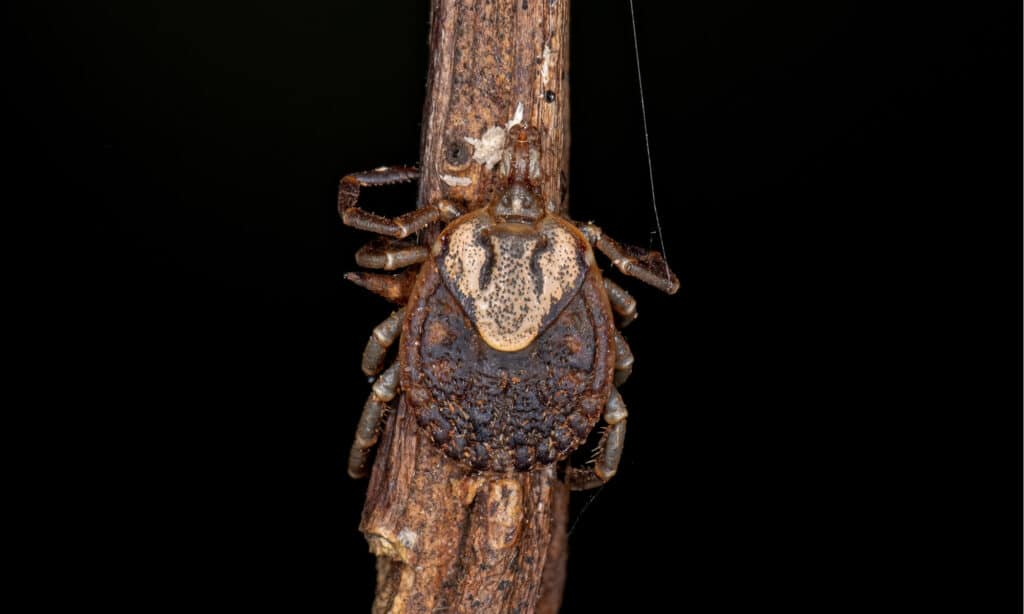
The cayenne tick lives only in the southeastern United States and northern Mexico.
©Vinicius R. Souza/Shutterstock.com
Cayenne ticks in New Mexico don’t pose much threat to humans. They’re much more likely to feed on horses, which are their favorite host. These ticks have round bodies and long, visible mouthparts. Females have tan legs and dark brown bodies with mottled tan scuta. Males have tan legs, are dark brown and tan mottled bodies.
Groundhog Tick
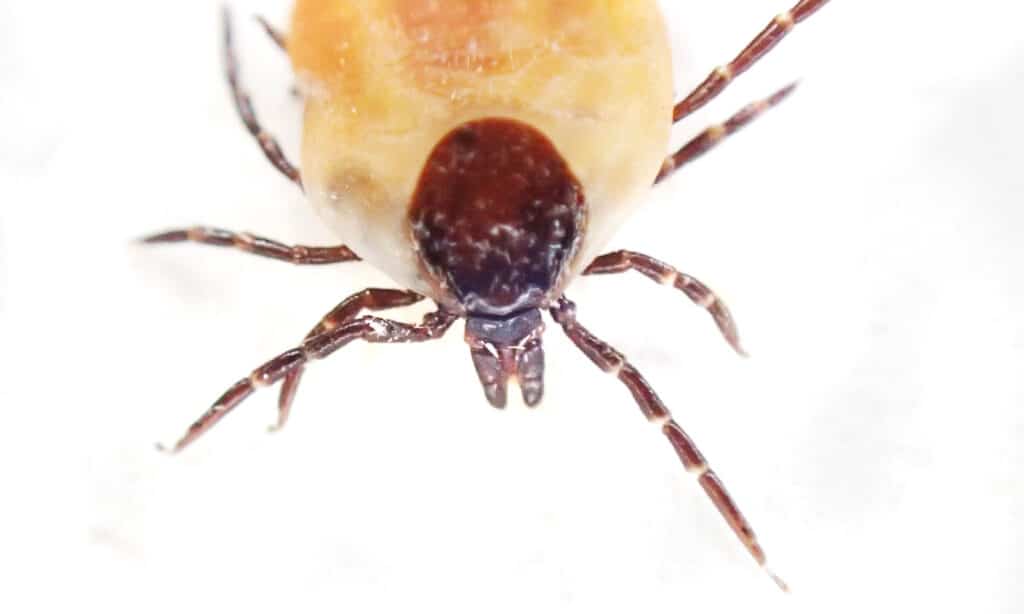
The groundhog tick lives in the entire eastern half of the United States, including the far eastern edge of New Mexico.
©iStock.com/jonnysek
Groundhog ticks have large, oval bodies. Their legs are pale brown, with light brown bodies. Females have larger mouthparts than males, as well as lighter-colored bodies. As their name suggests, groundhog ticks (also known as woodchuck ticks) primarily take small to medium-sized mammals as hosts. Some of their favorites include foxes, weasels, porcupines, groundhogs, skunks, and dogs. They rarely bite humans.
Blacklegged Tick

The blacklegged tick lives across the eastern and southern parts of the United States.
©iStock.com/Ladislav Kubeš
Blacklegged ticks, also known as deer ticks, are the only ticks in New Mexico that carry Lyme disease. They have ovoid bodies and distinct black legs. Their mouthparts are large and easily visible. Males have dark brown bodies with a tan band around the exterior. Females have easily recognizable mahogany brown bodies with a dark brown scutum.
Blacklegged ticks hang out in low brush or grass. They’ll feed on anything, including raccoons, white-tailed deer, elk, humans, dogs, and even birds. Their bite is especially concerning to humans because they carry Lyme disease, a potentially serious bacterial infection.
Rocky Mountain Wood Tick
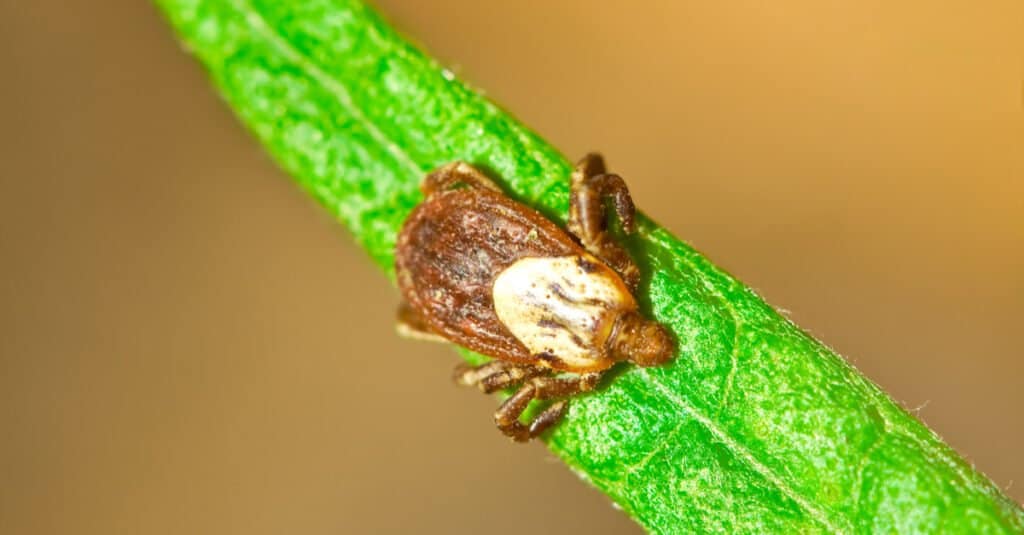
, The Rocky Mountain wood tick lives in higher elevations of the Rocky Mountain belt.
©South12th Photography/Shutterstock.com
Rocky Mountain wood ticks in New Mexico have long, ovoid bodies and red-brown legs. Their mouthparts are small. Males have mottled red-brown and tan bodies, while females have dark brown bodies and mottled tan scuta. These ticks feed on small mammals, like rabbits, woodchucks, and squirrels when they’re young. As adults, they feed on larger mammals, like dogs, humans, and mule deer.
Brown Dog Tick
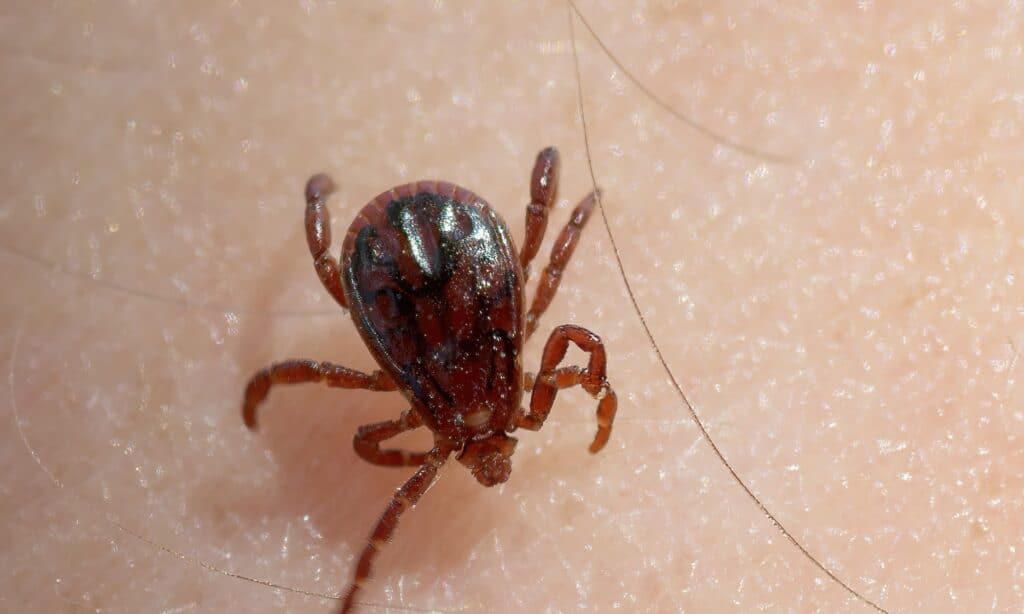
The brown dog tick sticks almost entirely to the indoors.
©iStock.com/RobertAx
Brown dog ticks in New Mexico have long, almost rectangular brown bodies with light brown legs. Their mouthparts are small, and there is no visible distinction between the body and the scutum. These ticks are unique; they live almost entirely indoors, anywhere near dogs. They feed almost exclusively on canines, though they have occasionally been found on cats, or even on humans.
When is Tick Season in New Mexico?
Ticks in New Mexico are most populous in the early spring months of May and June. Brown dog ticks, however, may be found embedded in dogs at any time of the year, since they live indoors. Additionally, winter ticks are most commonly seen in the late fall and winter. Because winter ticks feed off a single host for all of their life stages, they are active during the winter months, hence their name.
How to Avoid Ticks in New Mexico
One of the easiest ways to prevent ticks from biting you is to wear long-sleeved shirts and long pants. Ticks can’t run, jump, or see, and they can’t bite through fabric. Light-colored clothing works best, as the dark-bodied ticks stand out against light fabric. You can also spray your clothes (not your skin) with insect repellent that contains permethrin. Finally, after any outdoor activity, always check yourself for ticks. This applies to any canine companions you might have taken out too.
The photo featured at the top of this post is © KPixMining/Shutterstock.com
Thank you for reading! Have some feedback for us? Contact the AZ Animals editorial team.





